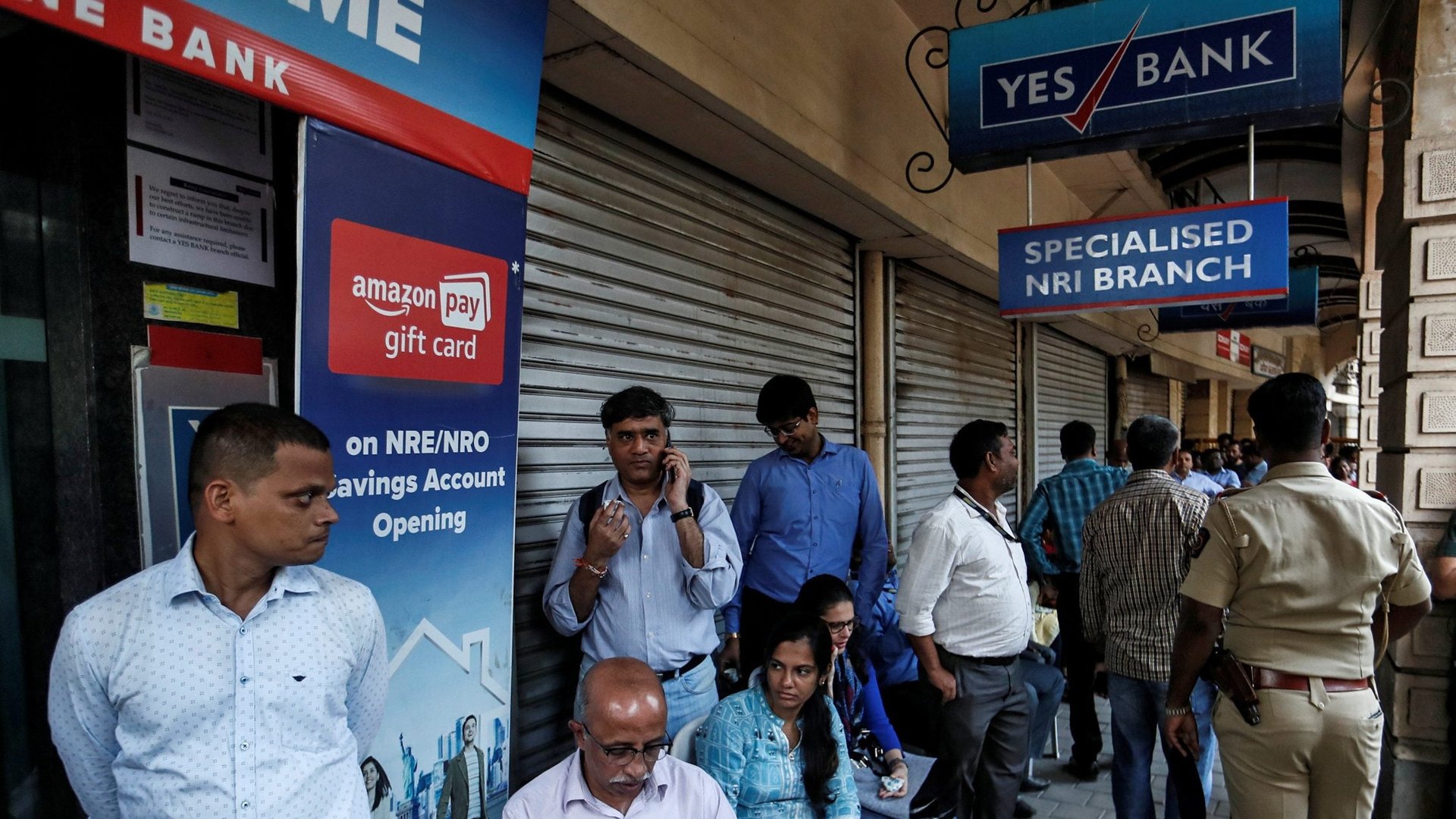India’s smaller banks are fast losing their deposits to bigger rivals
Corporate and institutional clients are losing their faith in India’s small- and mid-sized banks, triggering a flight of deposits to the perceived safety of bigger lenders.


Corporate and institutional clients are losing their faith in India’s small- and mid-sized banks, triggering a flight of deposits to the perceived safety of bigger lenders.
Mumbai-based RBL Bank, for instance, reported an 8% quarter-on-quarter (QoQ) drop in deposits to Rs57,874 crore ($7.7 billion) for the three months ended March 31. The withdrawals were mostly by state-owned entities, the lender said in a filing to stock exchanges on April 1.
In the same period, Pune-based IndusInd Bank, a mid-sized lender, lost 2% of its total deposits of Rs2.02 lakh crore, after a few state government entities made huge withdrawals. Overall, the bank’s deposit book shrank 7% QoQ in the March quarter, it informed the bourses.
At other small lenders like Mumbai-based DCB Bank, growth has remained tepid for almost a year. Its deposit book grew by a meagre 7% in financial year 2020, compared with 18% in the previous year.
In contrast, HDFC Bank, and ICICI Bank, India’s largest and second-largest private lenders, witnessed a sharp 8%, and 7.6% increase in deposits in the March quarter. Deposits at India’s fourth-largest private lender, Kotak Mahindra Bank, too, grew nearly 8% in the three months.
Risk-averse
What explains this deposit flight?
“People have become risk-averse and hence large banks are gaining deposit share at the expense of small- and medium-sized ones,” Asutosh Mishra, head of institutional equity research at Mumbai-based Ashika Stock Broking, told Quartz.
Consider this: In September last year, PMC Bank, a small Mumbai-based co-operative lender, went belly up after Rs6,500 crore worth of bad loans, amounting to 73% of its total assets, were uncovered. The Reserve Bank of India (RBI) had to intervene and impose a withdrawal limit to prevent a run on the bank.
Similarly, years of under-reporting of bad loans at YES Bank finally caught up with it late last year. A spike in bad loans in the December 2019 quarter spooked depositors, who began withdrawing money. By March, the situation aggravated, prompting RBI to place a moratorium on all withdrawals.
“Given these recent events (in Indian banking), people believe there could be asset quality-related issues at small- and medium-sized banks as well,” said Karthik Srinivasan, group head of financial sector ratings at credit rating agency ICRA.
The fears may not be unfounded.
At RBL Bank, non-performing assets (NPAs) stood at 3.62% of the total loan book as on March 31. At IndusInd Bank, it was 2.45% as on March 31.
In comparison, NPAs at HDFC Bank and Kotak Mahindra Bank were at 1.26% (as on March 31) and 2.46% (as on Dec. 2019).
With Covid-19 wreaking business activity, bad loans are only expected to increase.
Covid-19-hit
Earlier last month, sovereign ratings agency Moody’s downgraded the Indian banking system’s outlook to negative from stable. “Banks’ asset quality will deteriorate across corporate, small and medium enterprises, and retail segments, leading to pressure on profitability and capital,” it said in a note on April 2.
Due to their higher share of institutional customers compared to retail clients, small- and mid-sized banks may bear the brunt of this looming crisis.
“Banks with a higher proportion of bulk deposits need to be mindful as these are generally held by large companies and the propensity to move the money out is high when the companies face liquidity problems,” explained Srinivasan.
Moreover, there are likely to be higher deposit withdrawals by government entities as well. “Post-Covid-19, deposits will be withdrawn by governments…as they release money slated for various schemes,” said Rohan Mandora, an analyst at the Mumbai-based investment bank Equirus Capital. “If deposit growth slows, then loan growth can also get challenged (at small- and mid-sized banks). They will then be forced to offer higher (interest) rates to attract depositors, thereby increasing their cost of funds,” he added.
Large banks, with their strong share of retail deposits, brand recall, and bigger branch network, will benefit, predicts Mandora.
The smaller ones would be pushed deeper into the abyss.